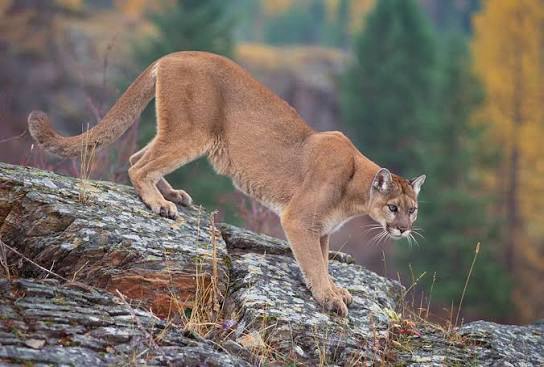
NORTH CAROLINA — North Carolina was once home to the eastern cougar, a subspecies of mountain lion that ranged across much of the eastern United States.
These large predators, also known as pumas, panthers, or catamounts, disappeared from the state by the late 1800s due to widespread hunting, trapping, and habitat loss as European settlement expanded.
In 2011, the U.S. Fish and Wildlife Service declared the eastern cougar extinct after years of study and review of reported sightings.
With that ruling, the only confirmed breeding populations of mountain lions in the United States remain in the western states and in southern Florida, where the Florida panther survives in limited numbers.
Despite the official extinction status of the eastern cougar, reports of mountain lion sightings in North Carolina continue. Residents and hikers in the Blue Ridge Mountains and other remote areas occasionally describe encounters with large cats resembling cougars.
However, wildlife biologists note that there has never been verifiable evidence—such as a confirmed photograph, carcass, or DNA sample—proving that a wild, reproducing population exists in the state. Many reports are believed to be cases of mistaken identity, often involving bobcats, dogs, or even large house cats.
The possibility of mountain lions returning to North Carolina is not entirely ruled out. Biologists acknowledge that the species is highly adaptable and capable of traveling long distances.
Young males from western populations have been documented dispersing hundreds of miles in search of new territory.
One well-known case involved a mountain lion that traveled from South Dakota to Connecticut, where it was struck and killed by a vehicle in 2011. Such long-range movements show that cougars can cover vast distances, raising the possibility that individuals could occasionally reach the Southeast.
Still, experts emphasize that the presence of a wandering individual is not the same as reestablishment. For a sustainable population to return to North Carolina, there would need to be both male and female cougars present in suitable habitat, along with sufficient prey such as deer.
North Carolina’s forests and abundant white-tailed deer population could theoretically support mountain lions, but without evidence of breeding pairs, biologists consider a natural reintroduction unlikely in the near future.
Conservation groups occasionally raise the question of whether humans should reintroduce cougars to the eastern United States. Proponents argue that the return of an apex predator could help balance deer populations and restore ecological systems.
Opponents point to risks of human-wildlife conflict, livestock losses, and challenges of managing a predator that has been absent from the region for more than a century.
For now, the possibility of mountain lions in North Carolina remains more a subject of speculation than confirmed fact. While occasional long-distance wanderers may reach the region, experts agree that no breeding population exists in the state today.









